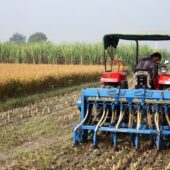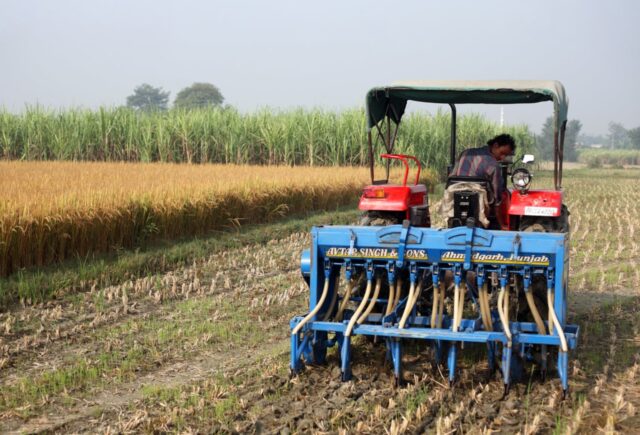Launched by The Inevitable Policy Response, the new tool aims to help investors assess likely policy responses to both climate change and nature and their impact on future land use

The Inevitable Policy Response (IPR), a climate forecasting consortium commissioned by the Principles for Responsible Investment (PRI) has launched FPS + Nature (FPS+N), which it says is the world’s first integrated nature and climate scenario published for use by investors.
FPS+N builds on the IPR’s 1.8C Forecast Policy Scenario (FPS), focused on climate policy and its interaction with land use, by including emerging policy action on nature. The purpose of the scenario is to provide investors with an assessment of likely policy responses to both climate change and nature loss out to 2030 and to 2050 and of how these responses will shape future land use.
FPS+N shows that nature-related policies are likely to increasingly impact the land use sector, with their effects felt throughout the whole economy and interacting with climate action across the areas of food, energy, nature-related goods, services and assets, supply chains and the global environment.
IPR says that having a forward-looking view on how policy, technological and social trends could impact investment value drivers, will help investors to conduct more robust risk and opportunity assessments of their investments.

Mark Fulton, project director for the IPR, told Impact Investor that investors were increasingly aware of potential changes in climate and nature-related policy with momentum building off the back of the COP15 biodiversity summit and advances in the development of the Taskforce on Nature-related Financial Disclosures framework.
“IPR sees future pressure on policymakers on the trajectory of global emissions and progress on reductions that will arise from the 2023 Global Stocktake. Then the 2025 Ratchet will see land use, nature and NBS [nature-based solutions] policy measures advanced, moving them higher up the agenda in finance and investment considerations,” Fulton said, adding that based on consultation and interest, the IPR believed the FPS+N would be useful tool to a range of investors.
“Impact investors who are targeting NBS will find the analysis and investor value drivers quite relevant to their specific assessment processes,” he noted.
FPS+N also covers six other policy areas at the nexus of land use, climate and nature, such as carbon pricing, bioenergy, diets and deforestation and includes a detailed analysis of six different types of nature based solutions, including blue carbon options such as mangrove restoration.
Implications for investors
In its scenario, IPR outlines the implications for investors based on three broad categories: the disruption to commodity production and supply chains, the development and evolution of new products and opportunities, and NBS-based carbon credits and emerging nature markets.
These categories include both risks and opportunities for investors with FPS+N forecasting growth in nature markets through the formalisation of nature-related targets, the creation of market infrastructure and corporate demand which it says would support the emergence of voluntary biodiversity credit markets. These, it says, could potentially be integrated with NBS-based carbon markets.
It estimates the revenue potential from the generation of biodiversity credits to be worth $18bn annually by 2050 and projects NBS to reach $22bn in annual revenue by 2030, and $204bn by 2050, as it says “corporates and governments pursue cost-effective carbon mitigation options that also produce nature co-benefits”.

In response to questions from Impact Investor, Roel Nozeman, chair of the Partnership for Biodiversity Accounting Financials (PBAF), said that FPS+N was an important next step in scenario analysis and identifying the key risks and opportunities for investors of nature loss and climate change and resulting trends in nature and climate policies.
“It clearly emphasizes the need to include the climate-biodiversity nexus, including policy trends which are mainly climate focused, trends which are mainly nature focused and the overlap between the two. At the same time, FPS + Nature is still just a first step, with changes in policies related to sea-use, pollution and the introduction of invasive alien species still being out of scope,” he added.
Impact Investor reported last year on a new accounting standard for financial institutions developed by the PBAF to measure the impact of their loans and investments on biodiversity, and asked whether IPR also planned to include the impact of investment on nature and biodiversity loss in future scenario analysis.
Fulton said: “IPR’s focus is generally on the drivers of financial impact on investors of sustainability risks and opportunities, rather than the impact of investors/investments on sustainability outcomes, although the two are clearly closely related, since managing sustainability transition risk will reduce negative sustainability impact.”
He confirmed that the IPR had not assessed the implications of portfolio holdings on markets directly before and had no plans to do so in the future.
Roel added that although the focus of the scenario was more on making clear to investors that the financial sector needs to act and why, rather than its role in reducing damage to biodiversity, the guidance it provided on the priority areas to focus on from a policy and land use perspective could be combined with other industry guidance and tools.
“Investors can use this knowledge to explore their role together with other stakeholders (government, industry, local stakeholders), making use of the tools and guidance provided by initiatives like PBAF,” he said. “For example, an assessment of impacts on biodiversity and ecosystem services will show to an investor who benefits and who loses from the changes in ecosystem services (including private and public services) resulting from an investment. This will help in identifying the stakeholders that should be involved in the investment and the role of private and public finance.”
Accompanying the scenario is an FPS+ Nature Value Drivers Database, an open access resource which incorporates over 80 land use value drivers for financial institution and policy maker use and complements the previously released value drivers datasets for energy, land use and tropical soft commodities.





